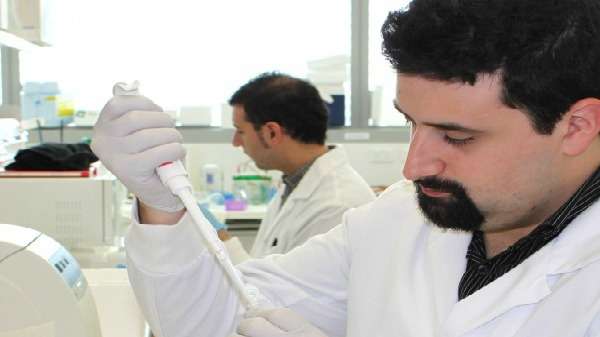Waking up dormant tumour suppressor genes

A drug-free cancer treatment could teach our genes to destroy the disease from within, according to Western Australian medical researchers.
Dr Benjamin Garcia-Bloj and his colleagues from the Harry Perkins Institute, Cancer Epigenetics Laboratory used a gene-editing technology called CRISPR to 'wake up' key tumour suppressor genes to destroy the cancer from within.
The team primarily focused on applying the technology to breast and lung cancer cells, but are also studying its potential effectiveness in gastric tumour cells.
In 2016, it is estimated that 16,084 new cases of breast cancer will be diagnosed in Australia and in the same year it is estimated that the age-standardised mortality rate for lung cancer will be 31 deaths per 100,000 persons.
"In everyday life people often develop potentially cancerous cells, but there are systems that very efficiently recognise DNA damage and either repair it or self-destroy the problematic cell," Dr Garcia-Bloj says.
Tumour suppressor genes are key to this self-healing as they check the cell doesn't have any damage or mutations and isn't growing uncontrollably.
"It's truly amazing that the reactivation, the 'waking up', of these genes could one day do the work of curing a person's own diseases," Dr Garcia-Bloj says.
"And the cure could be made without drugs, which often are responsible in traditional cancer treatments for creating a negative change to the body and the organisms it contains," he says.
Dr Garcia-Bloj explains that a mechanism that keeps check of the functionality of tumour suppressor genes before they are switched off or in 'dormant mode' is the theory behind the study.
"The cells have mechanisms that can prevent normal cells from turning into cancer cells, it's just that they are silenced when you have a cancer. The treatment would remind the cells how to activate the mechanisms they initially had to prevent the spread of cancer."
Dr Garcia-Bloj says scientists have used CRISPR technology to activate dormant genes before, but until now the activation rate was very low.
"Our team was able to boost the genes 22,000-fold and stop the cancer growing in vitro, but we are still in the proof of concept stage and it will still be many years before clinical trial can begin," Dr Garcia-Bloj says.
"We still need to do the animal studies and show that we are able to show the same outcomes with multiple genes in live tumours," he says.
This research has been published in Oncotarget.
More information: Benjamin Garcia-Bloj et al. Waking up dormant tumor suppressor genes with zinc fingers, TALEs and the CRISPR/dCas9 system, Oncotarget (2016). DOI: 10.18632/oncotarget.11142
This article first appeared on ScienceNetwork Western Australia a science news website based at Scitech.














